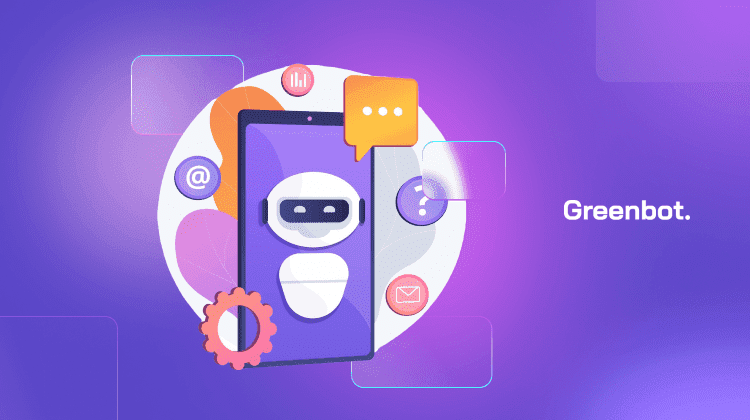
Artificial intelligence has existed for years, but the recent AI boom, led by tools like ChatGPT, has brought it into the spotlight. Many now rely on these AI-powered chatbot technology for different tasks because of their human-like traits—knowledge, attentiveness, and creativity—even though these traits vary between tools. But what is a chatbot, and how does it fit into this technological revolution?
That said, using chatbots like customer service bots and seeing how helpful they’ve become makes you wonder: how does this technology work?
In this post, we’ll break down what chatbots are, how they understand human language, and how they respond so effectively.
Understanding Chatbots
Chatbots are computer programs that simulate human conversation with users through text or voice. They’ve been around since the 1960s, starting with ELIZA, a simple program that mimicked conversations using pattern-matching. Over the years, chatbots have come a long way, now powered by AI and machine learning to handle more complex interactions.
Today, chatbots are important in simplifying communication and automating repetitive tasks. They’re often used as chatbots for customer service, healthcare, and e-commerce for 24/7 support.
How Do Chatbots Work?
Chatbot technology comes in different forms, which determines how it works. Some rely on simple programming to respond to user queries with predefined answers. Others use advanced techniques like Natural language processing (NLP) and machine learning (ML) to handle complex issues and offer accurate responses.
Machine learning is critical to building chatbots. It trains chatbots on large datasets of diverse chats to help them recognize patterns, understand language nuances, and predict responses.
This technique doesn’t stop there. It allows LLM-based chatbots to use contextual memory. They can track the conversation’s flow and give more relevant, coherent responses. For example, a chatbot may remember your allergies and tailor its response if you ask about something related to them.
Advanced chatbots use NLP to understand, interpret, and process human language. NLP analyzes context, intent, and meaning by separating user inputs into structured data. Then, it generates relevant responses.
Despite these advanced capabilities, chatbots often require some level of human intervention. Developers train them by feeding datasets and refining responses when they fail to meet expectations. In complex cases, human help is needed to ensure accuracy and satisfy users.
Types of Chatbots
Rule-Based Chatbots
Rule-based chatbots follow pre-set instructions to respond to specific user inputs with fixed answers. This makes them less flexible and only suitable for straightforward tasks.
Examples include basic customer service bots that handle FAQs—and older virtual assistants, like the first versions of Siri.
AI-Powered Chatbots
AI-powered chatbots use AI and ML to process natural language and give more personalized, context-aware responses. They improve over time as they get trained on more datasets.
Examples include advanced chatbots like ChatGPT and virtual assistants like Google Assistant.
Key Features of Chatbots
Natural Language Understanding (NLU)
Natural Language Understanding (NLU) is a critical feature that enables chatbots to process and interpret human language. It breaks down user input into structured data, looking at context, intent, and meaning.
NLU analyzes tone and sentiment to help chatbots respond naturally and relevantly. This is important for users who phrase things differently or casually.
Conversational Context Retention
Conversational context retention keeps interactions flowing smoothly between users and chatbots. When chatbots remember vital details from earlier in the chat, they can give more relevant responses.
For instance, if a user asks about a product and later about shipping, the chatbot can reference the earlier part of the chat. This ability to retain context helps chatbots create a more coherent and personalized experience.
Multi-Language Support
Multi-language support enables chatbots to talk to users in different languages. This makes them accessible to a global audience and can provide localized support. They can break language barriers, helping businesses serve international customers.
Multi-language capabilities enable chatbots to engage users from different regions. This is thanks to built-in translation features or advanced language models, which boost user satisfaction and experience.
Benefits of Chatbots
Chatbots are very useful, especially for businesses. They streamline customer queries and routine tasks. A report by MIT Technology Review says, “90 percent of respondents report faster complaint resolution. Over 80 percent have noted enhanced call volume processing using AI.”
Here’s a quick rundown of their popular benefits:
- 24/7 Availability. Chatbots ensure customers get help any time of the day, even outside business hours. For example, a customer facing a late-night issue can receive instant assistance instead of waiting for the next working day.
- Cost Efficiency. Customer service chatbots automate answers to common questions, reducing the need for extra support staff. They can handle queries about store hours and return policies, thus reducing hiring and training costs.
- Scalability. Chatbots can chat with multiple users at the same time without delays. This is especially useful during busy times, like sales, when they ensure everyone gets prompt attention.
- Improved Customer Experience. Quick responses and tailored interactions make users feel valued. For instance, chatbots can recognize customer needs and either solve the issue or pass it to the right team without wasting time.
- Data Collection. Chatbots can gather insights from conversations like popular queries or product concerns. For example, if customers keep asking about a specific feature, businesses can address it more effectively.
- Multilingual Support. Advanced chatbots can handle multiple languages, making connecting with a global audience easier. For example, a customer from Spain can get the same seamless support in Spanish as one from the US in English.
- Increased Productivity. Chatbots handle routine tasks, such as booking appointments and sharing FAQs. This frees human agents to focus on complex issues, improving support quality.
- Consistency. Unlike humans, who may err, chatbots always give accurate, consistent answers. For example, if a policy changes, the chatbot updates immediately, keeping answers consistent.
Challenges of Chatbot Implementation
Chatbot implementation has a few challenges, and setup costs can be steep. This is especially true for businesses wanting to build advanced AI chatbots that integrate into their systems. Inefficient pre-work is a challenge, as the collected data is often messy. Researchers need to spend time making it trainable.
Also, chatbots often struggle with complex or unclear queries. This can lead to frustrating or inaccurate responses.
Data privacy is also a major concern. Chatbots handle sensitive customer data, so robust security and compliance measures are necessary.
Use Cases of Chatbots
Customer Support
Chatbots are invaluable in customer service, especially when powered by customer service chatbot software. These tools handle FAQs and support tickets quickly and efficiently, providing instant answers to reduce wait times. This allows support agents to focus on more complex issues, improving overall customer satisfaction.
E-commerce Assistance
In e-commerce, chatbots recommend products and help with sales. They analyze browsing behavior to suggest items that match customer interests, making shopping easier and boosting conversion rates.
Healthcare Applications
In healthcare, chatbots engage patients, schedule appointments, and check symptoms. They are transformative in delivering remote health services as they boost support, care, and mental health.
Chatbots also help by providing quick support for non-urgent medical questions. This eases the load on healthcare professionals.
HR and Recruitment
Chatbots help HR teams automate candidate screening and interview scheduling. They also answer common employee queries, thus saving time on repetitive tasks. HR can then focus on more strategic recruitment and employee management.
How Chatbots Are Evolving with AI
Chatbots are evolving rapidly with AI advancements, becoming more intelligent and capable. Nature language processing has improved AI chatbots to ensure they understand human language better. They can handle nuanced conversations and respond more naturally.
Machine learning supports chatbots by enhancing their ability to predict user needs and offer personalized responses.
AI chatbots are now integrated across many platforms, such as websites, social media, and messaging apps, ensuring a consistent user experience. They can suggest products, answer questions, or anticipate issues by analyzing user behavior.
As AI chatbots improve, they will take on more advanced tasks such as complex customer queries, sales assistance, and basic health advice. They will also transform industries like healthcare, retail, and customer service.
The Future of Chatbots
The future of chatbots looks promising, with several emerging trends shaping their development. A key trend is emotion recognition, which enables chatbots to detect customer moods and adjust their responses, fostering more empathetic interactions.
Hyper-personalization will also enhance the customer experience. It will enable chatbots to recommend things based on detailed user data and behavior.
Plus, chatbots will continue to evolve with industry-specific use cases. They will become more specialized in the healthcare, finance, and education sectors, handling complex tasks such as providing medical advice, assisting with financial planning, and offering personalized learning experiences.
This evolution will make chatbots an essential tool across various industries in the near future.
Best Practices for Developing Chatbots
Identifying Use Cases
To develop effective chatbots, developers must define clear goals and identify the specific use cases to address. This will ensure the chatbot meets users’ needs and solves real problems in customer support, sales, or healthcare.
Choosing the Right Technology Stack
Selecting the right tools and platforms is crucial for chatbot development. Consider using popular frameworks like Dialogflow, Microsoft’s Bot Framework, or Rasa. They have strong NLP and integration options that ensure the chatbot works well on various platforms.
Testing and Iteration
Testing and continuous iteration are key to improving a chatbot’s performance. Developers should test the bot with users. They should also analyze the feedback and refine its responses regularly. Continuous updates based on user interactions will also ensure the chatbot remains relevant and effective.
Popular Chatbot Platforms
Several platforms are leading in chatbot development. Popular options include:
- Julius AI: A sophisticated platform that specializes in creating adaptive conversational agents for personalized user experiences, ideal for sales, customer service, and training workflows.
- IBM Watson Assistant simplifies creating AI chatbots using a low-code interface. It works seamlessly with websites, mobile apps, and messaging channels and provides robust analytics to boost performance.
- Oracle Digital Assistant is another platform that excels in enterprise scenarios. It integrates with Oracle Cloud applications and leverages NLP to automate complex workflows. Its security and scalability make it ideal for larger organizations.
- Zendesk Answer Bot also excels at customer support. It works with Zendesk’s ticketing system to resolve common queries and reduce agents’ workloads.
Other options include:
- Microsoft Azure Bot Service: For customizable development tools
- Dialogflow by Google: Vital in natural language processing
- ChatGPT: Renowned for conversational AI flexibility and support for creating various chatbots, including image-to-text AI.
These platforms support customer service, sales, and internal workflows.
Real-World Examples of Chatbots
Modern chatbots have excelled across industries. They improve efficiency and simplify user interactions.
In e-commerce, Sephora’s chatbot is a digital beauty assistant that gives personalized skincare advice and product suggestions. This tool has transformed customer engagement. Soon after its launch, it logged over 11 million monthly interactions. Similarly, 1-800-Flowers uses a chatbot to speed up orders during busy times, like Valentine’s Day.
In banking, OPPLUS showed chatbots can be effective. They cut customer service escalations by 84%, improving response times and user satisfaction.
Healthcare is also leveraging chatbot innovation. Healthily brings medical advice into everyday life by combining AI with a user-friendly interface. The NHS’s Florence bot helps chronic care patients by sending reminders and tracking symptoms. This eases the load on healthcare providers and improves patient care.
FAQs About Chatbots
What is the difference between a chatbot and a virtual assistant?
Chatbots are designed to answer FAQs or handle support requests within limited contexts. Virtual assistants, like Alexa and Siri, are advanced. They perform many tasks and integrate with systems for personalized experiences.
How secure are chatbots?
Chatbot security depends on encryption and compliance with data protection regulations like GDPR. Without safeguards, they are vulnerable to data breaches and misuse. Robust security measures are required.
Can chatbots replace human employees?
Chatbots can automate repetitive tasks but lack the creativity and empathy for complex roles. They cannot replace humans but can improve efficiency and handle basic inquiries.
Is Alexa a chatbot?
No, Alexa is a virtual assistant that performs diverse tasks using advanced AI and machine learning. Unlike chatbots, it has more features. It can integrate with smart homes and accept voice commands.
What is an example of a chatbot?
An example of a chatbot is an AI-powered virtual assistant used in messaging apps or websites to engage with users. These tools simulate human interaction, answering questions, assisting with tasks, and providing support.
Businesses often use different types of chatbots, such as rule-based bots for simple queries or AI-driven bots for more complex conversations. For instance, customer service chatbot software handles inquiries efficiently, guiding users while offering the convenience of automated responses at minimal cost.
What is a Chatbot? Conclusion
Chatbots simplify communication and automate tasks, making them invaluable for both businesses and individuals. By offering personalized user experiences, they enhance human interaction with technology, bridging the gap between people and machines.
Different types of chatbots, from rule-based systems to AI-driven conversational bots, cater to various needs, whether it’s answering questions or performing complex tasks. Additionally, chatbots can collect customer data, providing insights that help businesses refine their strategies. As they continue to advance, their role in reshaping digital platforms and improving efficiency will only grow.























